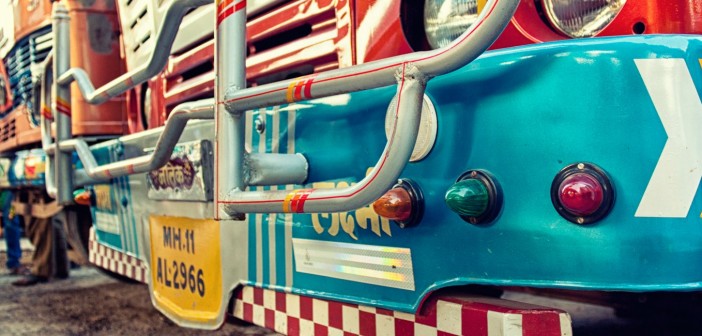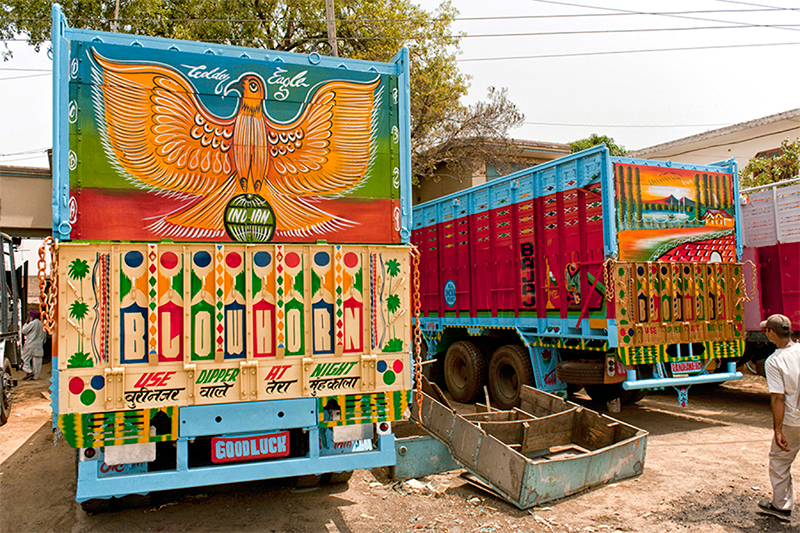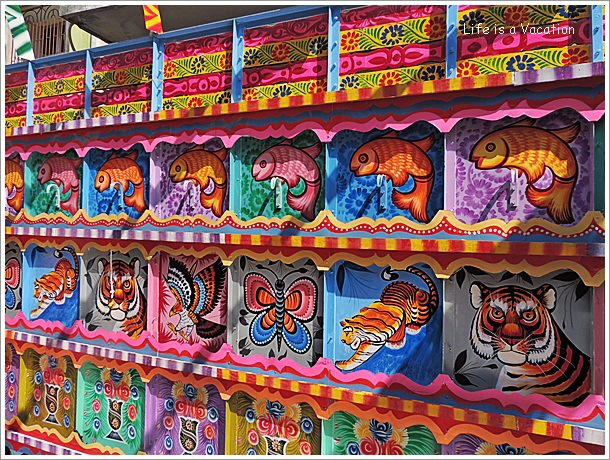What is it?
Truck drivers in India, who typically spend 10 months of the year on the road, are inclined to have the exteriors of their vehicles painted in myriad colours, slogans and religious symbols. The purpose is twofold; firstly, this particular modern folk-art form enables the truck drivers to engage with a unique form of self-expression. Secondly, the art causes the trucks to function as vibrant beacons for clientele, thereby attracting business. 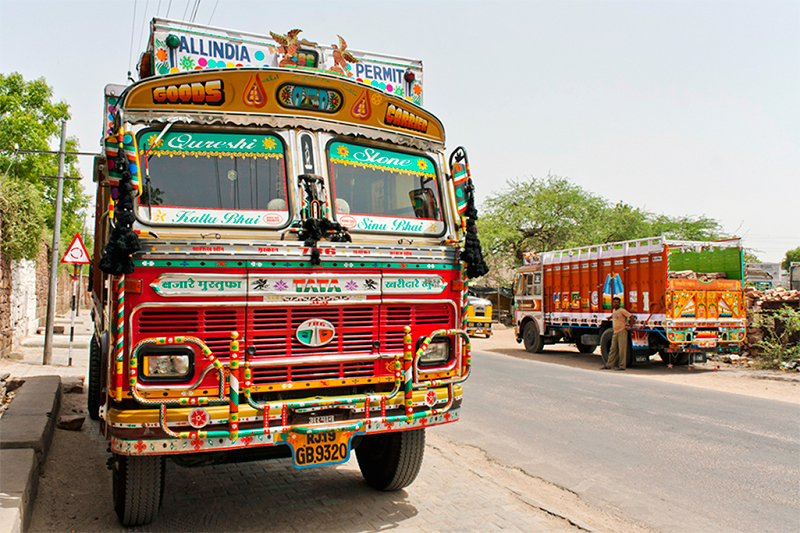
What does it signify?
Indeed, truck drivers play a crucial role in the functioning of the Indian economy, as they are able to deliver products to remote parts of the country that are otherwise inaccessible by train. Shantung Suma, the graphic designer and filmmaker who created the 2013 documentary Horn Please, commented: “A better looking truck attracts more business […] Imagine the truck is like a moving billboard. It travels from one side of the country to the other, carrying the message of the truck driver and owner.”
Horn Please examines the roots of Indian truck art and its subsequent aesthetic evolution. The documentary also focuses on how the art form has impacted the artistic world at large, including the lives of its own creators and the truck drivers who have embraced it. It also questions whether the art form will continue to exist in the future, as India’s economy is certainly not exempt from capitalist influences.
The title of the documentary itself is literally taken straight from the rear-ends of the trucks; a message that serves to remind the drivers of vehicles behind the truck to blow their horns before overtaking – a long-held Indian tradition.
India spans almost 4 million square km., and so these vehicles double as homes for their drivers, replete with bunk beds and family photos. Suman continued:
“Since [the drivers are]missing their kids and wives, they like to decorate their trucks with ornaments to remind them of home. They might adorn the cabin with bangles – things that remind them of their wives.”
Of course, only the psychedelic exteriors of the trucks are visible to the outside world. They bear images of gods and goddesses, Bollywood stars, rhyming couplets, motifs, and political logos that the driver personally connects with.
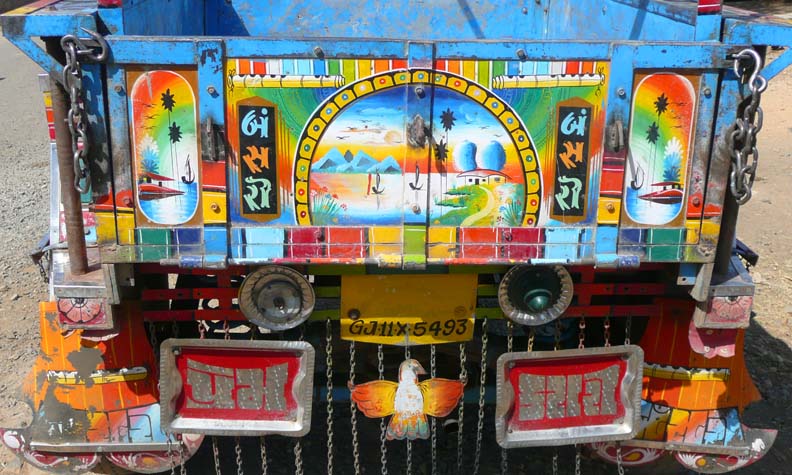
Photographer Dan Eckstein, who wrote Horn Please: The Decorated Trucks of India, and travelled over 10,000kms. of the country in order to complete his research, commented: “Depending on which region they’re from, you’ll see Hindi, Muslim, Sikh, and Christian iconography. There’s also a lot of decoration that has to do with luck on the road and warning away bad omens. There’s a little demon face they put on the front of the truck, or they might tie shoes to the bottom which is meant to keep away the evil eye.”
Uncertain future
Unfortunately, it has been reported that the hand-painted designs are being slowly replaced by stickers. Suman attributes this to the generational shift towards capitalism, saying: “”Some of these truck artists who have been carrying forward this profession for generations, now don’t want their kids to do it because they realize the hardship. They say: ‘I want my kids to go to college and work in an air-conditioned office, rather than be here in the sun painting trucks all day.'”
The devolution of this fantastical art form would, of course, pose unfortunate social consequences, as an entire aesthetic would be wiped out and a way of life altered forever. However, its palpability arguably renders it a very informative indicator of the global market evolution.

